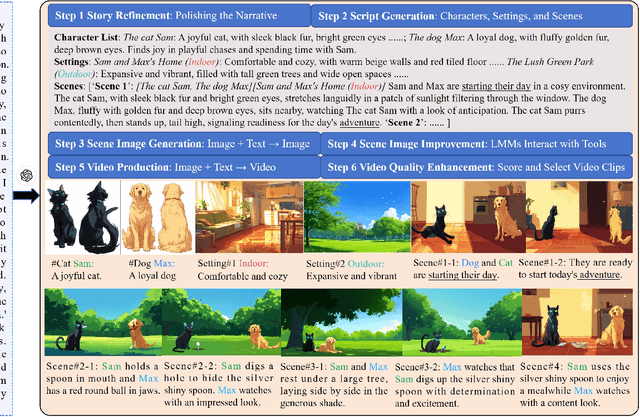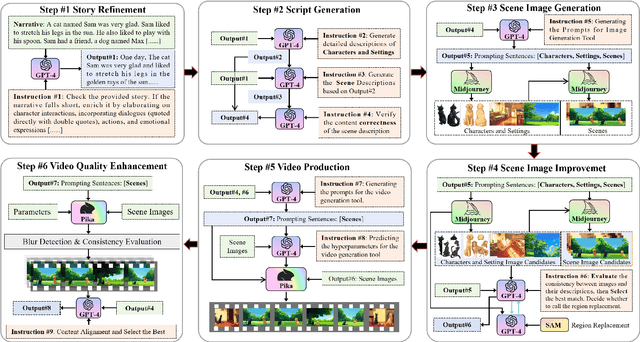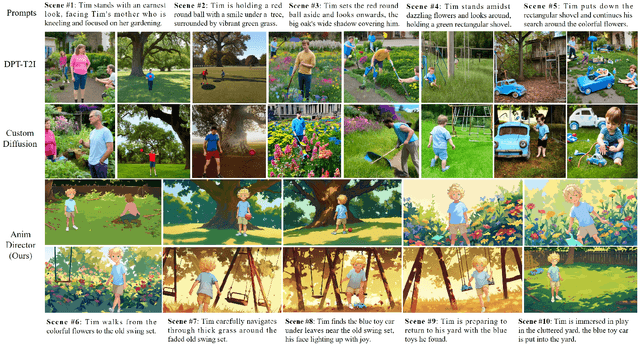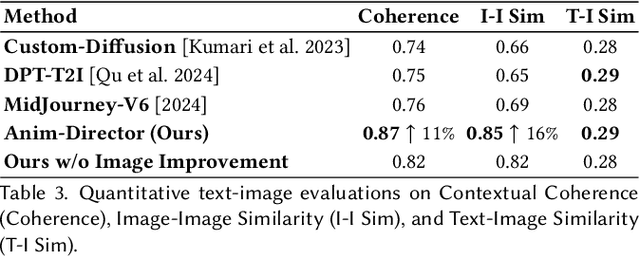Anim-Director: A Large Multimodal Model Powered Agent for Controllable Animation Video Generation
Paper and Code
Aug 19, 2024



Traditional animation generation methods depend on training generative models with human-labelled data, entailing a sophisticated multi-stage pipeline that demands substantial human effort and incurs high training costs. Due to limited prompting plans, these methods typically produce brief, information-poor, and context-incoherent animations. To overcome these limitations and automate the animation process, we pioneer the introduction of large multimodal models (LMMs) as the core processor to build an autonomous animation-making agent, named Anim-Director. This agent mainly harnesses the advanced understanding and reasoning capabilities of LMMs and generative AI tools to create animated videos from concise narratives or simple instructions. Specifically, it operates in three main stages: Firstly, the Anim-Director generates a coherent storyline from user inputs, followed by a detailed director's script that encompasses settings of character profiles and interior/exterior descriptions, and context-coherent scene descriptions that include appearing characters, interiors or exteriors, and scene events. Secondly, we employ LMMs with the image generation tool to produce visual images of settings and scenes. These images are designed to maintain visual consistency across different scenes using a visual-language prompting method that combines scene descriptions and images of the appearing character and setting. Thirdly, scene images serve as the foundation for producing animated videos, with LMMs generating prompts to guide this process. The whole process is notably autonomous without manual intervention, as the LMMs interact seamlessly with generative tools to generate prompts, evaluate visual quality, and select the best one to optimize the final output.
 Add to Chrome
Add to Chrome Add to Firefox
Add to Firefox Add to Edge
Add to Edge